Understanding the Essence of Bourbon Whiskey
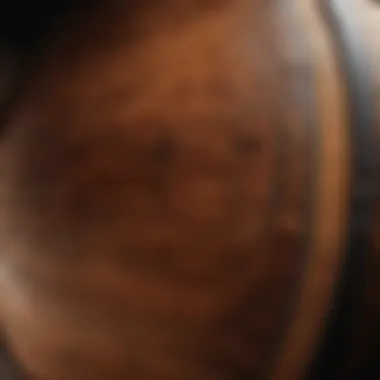
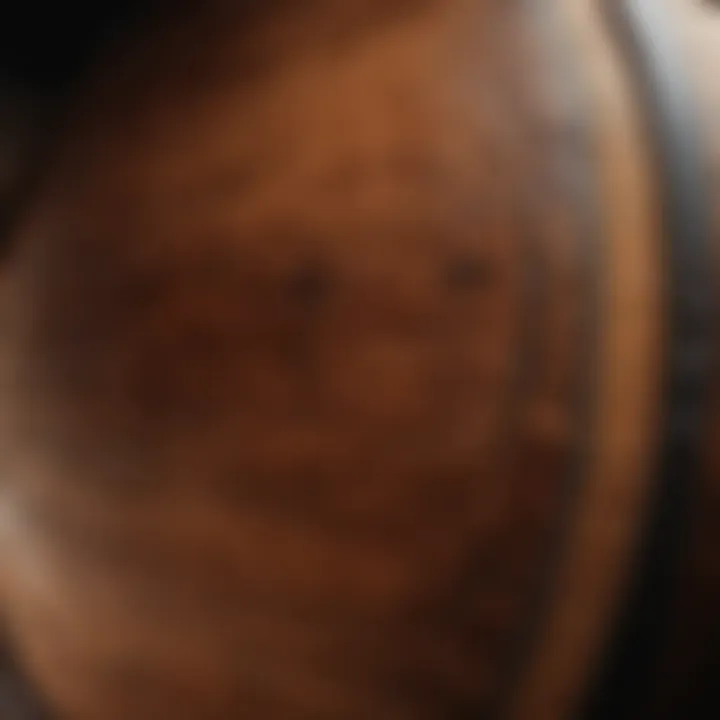
Intro
Bourbon whiskey is more than just a drink. It represents a rich heritage intimately connected with American culture. Understanding what bourbon truly is requires a look at its specific requirements, production methods, and cultural significance. This exploration dives into the essentials that set bourbon apart in the vast world of spirits.
Legal Requirements
To be classified as bourbon, whiskey must adhere to several strict legal definitions. Firstly, it must be distilled from a grain mixture that is at least 51% corn. This high corn content contributes to bourbon's distinct sweetness, a signature characteristic of the spirit. Furthermore, it must be aged in new, charred oak barrels. Aging bourbon in this type of barrel gives it its unique flavor profile and color.
Additionally, bourbon must be distilled to no more than 160 proof, and it must enter the barrel for aging at no more than 125 proof. Upon bottling, it must be at least 80 proof. These legal standards ensure that every bottle of bourbon you encounter maintains a level of quality and consistency.
Ingredients of Bourbon
The ingredients in bourbon are a fundamental component of its identity. The main ingredients include:
- Corn (at least 51%): The primary ingredient contributing to its sweetness.
- Rye: Adds spiciness and complexity.
- Malted Barley: Aids in fermentation and impacts taste.
- Wheat: Used in some bourbons to impart a softer flavor.
Each distillery may have its own recipe, and variations can lead to significant differences in flavor.
Production Process
The bourbon production process consists of several steps that must be followed carefully:
- Milling: The grains, primarily corn, are crushed to expose their starches.
- Mashing: The milled grains are mixed with hot water to convert starches into fermentable sugars.
- Fermentation: Yeast is added to initiate fermentation, producing alcohol and other compounds that define flavor.
- Distillation: The liquid, now known as 'wash', is distilled to concentrate the alcohol.
- Aging: The distilled spirit is poured into new charred oak barrels for aging, which mellows the flavor and adds complexity.
- Bottling: After aging, the bourbon is filtered and bottled at the required proof.
Cultural Significance
Bourbon holds a special place in American culture, especially in Kentucky, where it originated. This spirit is often associated with Southern hospitality and craftsmanship. Bourbon has become synonymous with various aspects of American life, from barbecues to fine dining events.
"Bourbon is America’s only native spirit, rooted in history and tradition that reflects the identity of its people."
The appreciation of bourbon today continues to grow, as both traditional methods and modern innovations emerge, allowing a blend of the past with new techniques.
Closure
Understanding bourbon requires more than just tasting the spirit. It involves an appreciation of its legal foundations, its ingredients, and the meticulous production process. As bourbon continues to evolve, so does its role in society, with new distilleries popping up and old recipes being reimagined. By diving into these elements, a comprehensive understanding of bourbon whiskey unfolds, revealing its layered significance within the world of distilled spirits.
Defining Bourbon Whiskey
Defining bourbon whiskey is essential in understanding its distinct place in the world of spirits. It encompasses not only the production methods but also the historical and cultural significance behind this storied beverage. Distilling the essence of bourbon involves analyzing its ingredients, legal protections, and production practices. This knowledge is crucial for both enthusiasts and those new to the bourbon experience, enriching appreciation and supporting informed choices.
Historical Context
The origins of bourbon
The origins of bourbon trace back to the late 18th century in the United States, particularly Kentucky. Settlers used corn as the primary grain in their whiskey, given its abundance. Bourbon is named after Bourbon County, where it was first produced. This aspect highlights the practical nature of early American distillers who adapted their techniques based on available resources. The strong roots in American history provide a framework for understanding bourbon's evolution.
Evolution of production techniques
The evolution of production techniques in bourbon making has greatly increased the variety of flavors and styles available. Initially, distillers used rudimentary methods, but as the industry matured, advancements like column stills became more common. This evolution contributed to greater efficiency and consistency in production. Distillers also began experimenting with different aging processes and barrels, leading to diverse profiles that appeal to a wide audience.
Cultural significance in America
Culturally, bourbon plays a pivotal role in American heritage. It has been integrated into celebrations, social gatherings, and culinary experiences. The production of bourbon also reflects the craftsmanship and innovation, showcasing regional pride. Bourbon is often seen as a symbol of southern hospitality, further emphasizing its cultural importance. The growing respect for bourbon in contemporary society highlights its relevance and unique narrative within American culture.
Legal Definition
U.S. regulations on bourbon production
U.S. regulations on bourbon production serve to protect the authenticity of the spirit. For a whiskey to be classified as bourbon, it must meet specific criteria laid out by the U.S. government. These regulations ensure that the production process, ingredients, and aging comply with established standards. Understanding these regulations is important for consumers and producers alike, as it preserves the integrity of the bourbon classification.
Required alcohol content
The required alcohol content for bourbon is another critical aspect of its legal definition. Bourbon must be distilled to no more than 160 proof and entered into barrels at no more than 125 proof. This ensures that the whiskey retains its flavor and character during the aging process. The specified proof levels are beneficial as they establish a clear benchmark that maintains quality and consistency in bourbon products.
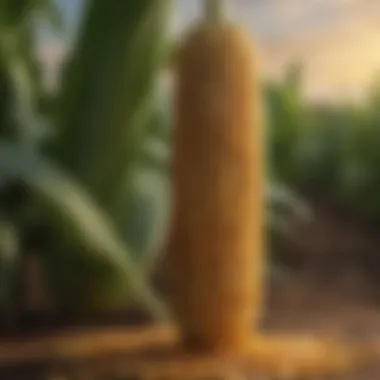
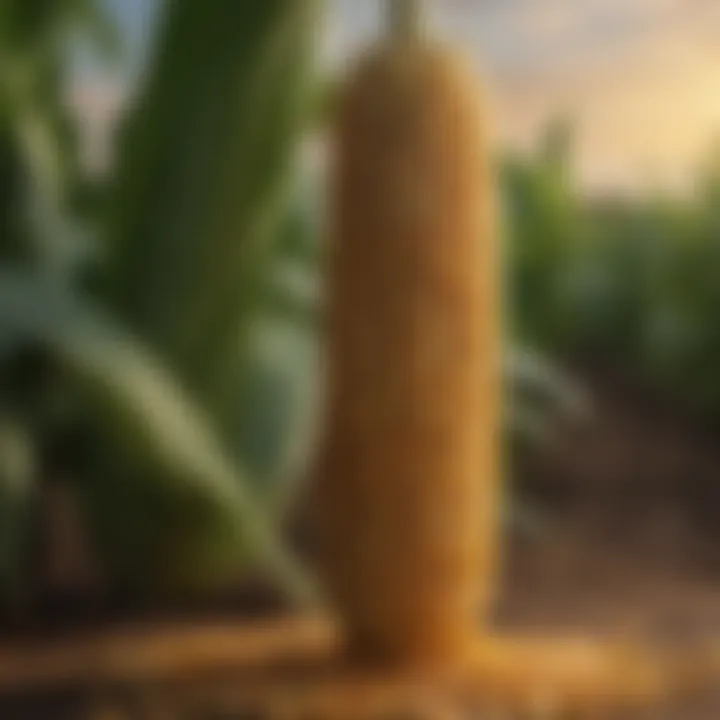
Mandatory aging process
The mandatory aging process for bourbon requires that it must be aged in new charred oak barrels. This element contributes significantly to bourbon's flavor profile by allowing it to interact with the wood, absorbing vanillin, tannins, and lignin from the barrel. The aging process not only mellows the spirit but also enhances its aromas and flavors. The stipulation of using new barrels means that each batch of bourbon has the potential for uniqueness, reinforcing the value and distinct quality associated with different brands.
Production Process of Bourbon
The production process of bourbon is critical to its character and taste. Each step, from milling to bottling, contributes to the final product. It is not merely about following a recipe; it is an art and science combined. Understanding this process enables enthusiasts to appreciate the nuances of different bourbons. The production practices can vary between distilleries, resulting in a wide range of flavors and qualities in the whiskey.
Milling and Mashing
Selection of grains
The selection of grains is essential in bourbon production. Bourbon must contain at least 51% corn, complemented by other grains like barley, rye, or wheat. This choice impacts the whiskey's flavor. Corn contributes sweetness, while rye adds spice and complexity. Barley aids in fermentation, ensuring a consistent yield. Selecting high-quality grains ensures a refined spirit. Poor grain choices can lead to undesirable flavors.
Role of corn
Corn is the cornerstone of bourbon, providing its distinctive sweetness. Its high sugar content influences fermentation, leading to a rich and smooth flavor profile. The use of corn is not only legal requirement but also a beneficial aspect of bourbon. This grain brings forth a mouthfeel that makes bourbon accessible to many palates. However, excessive reliance on corn can sometimes lead to a lack of complexity in the final product.
Mashing techniques
Mashing techniques are pivotal in developing the bourbon's flavor. During mashing, the chosen grains are combined with hot water to convert starches into fermentable sugars. Different mashing methods, such as mash bill ratios and temperatures, influence the whiskey’s character. For instance, a cooler mash can promote more delicate flavors. While traditional methods are effective, experimenting with techniques can yield unique variations, keeping the bourbon landscape dynamic.
Fermentation
Yeast's role in fermentation
Yeast plays a vital role in converting sugars into alcohol during fermentation. The choice of yeast strain affects flavor development, aroma, and overall complexity. Some distilleries use specific strains to achieve distinct characteristics, while others prefer traditional approaches. The yeast can also impart fruity or floral notes, enriching the bourbon experience. However, improper yeast management can lead to off-flavors, emphasizing the importance of this step.
Fermentation duration
The duration of fermentation significantly impacts the final bourbon's profile. Fermentation typically lasts from a few days to over a week. Shorter fermentation times yield lighter spirits, while longer durations contribute deeper flavors. This process is delicate; too long can lead to undesirable by-products, while too short can result in a lack of depth. A precise balance is needed here to craft a quality bourbon.
Impact on flavor development
The impact of fermentation on flavor development is substantial. The by-products created during this process influence the aroma and taste of the spirit. Phenolic compounds, esters, and higher alcohols all contribute unique flavors. Understanding these effects can help distillers refine their recipes. Mastery in controlling fermentation leads to nuanced bourbons that appeal to connoisseurs and casual drinkers alike.
Distillation
Types of stills used
The type of still used in bourbon production can shape the spirit. Common still types include pot stills and column stills. Pot stills allow for a more hands-on approach, which can enhance flavors. Column stills facilitate continuous distillation, producing higher alcohol concentrations. This choice affects purity and flavor complexity. Each method has its proponents and can lead to different profiles in the final product.
Distillation process
The distillation process is where alcohol is separated from the fermented mash. This highly controlled process is crucial for determining the spirit's potency and flavor. Distillation in bourbon typically occurs twice, with the first distillation yielding low wines and the second producing the desired spirit. Unlike other spirits, bourbon traditionally must not exceed 160 proof during this phase, preserving its character while ensuring quality.
Proof and its importance
Proof, indicating the alcohol content, plays a significant role in bourbon's identity. By U.S. law, bourbon must be distilled at no more than 160 proof and entered into barrels no higher than 125 proof. This regulates the spirit's flavor and aroma, ensuring it remains true to its roots. Higher proof bourbons tend to have intense flavors, yet they can be less approachable for some drinkers. Understanding proof helps consumers make informed choices about their bourbon.
Aging in Charred Oak Barrels
Choice of barrels
The choice of barrels critically influences bourbon’s flavor. Bourbon must be aged in new charred oak barrels, which impart vanillin and caramel notes to the spirit. Different char levels can change the intensity of these flavors. A barrel's previous usage also matters—first-use barrels produce richer flavors. While some distilleries may experiment with various wood types, traditional charred oak remains the standard in bourbon production.
Charring process
The charring process further alters the flavor profile. During this phase, the barrels are exposed to flames, creating a charred layer that filters the spirit as it ages. This process enhances color and complexity. The intensity of the char can result in different flavor notes, such as chocolate or coffee. This innovation has created diverse bourbon expressions capable of appealing to various tastes.
Influence of aging on taste
Aging dramatically influences bourbon's overall flavor and character. As bourbon interacts with the wood, it develops a range of flavors, including spices, fruits, and sweet notes. The environment where the barrels are stored—temperature fluctuations and humidity—also affects aging. Longer aging does not always equate to better bourbon; it’s a nuanced balance of time and conditions that leads to the optimal profile.
Bottling and Labeling
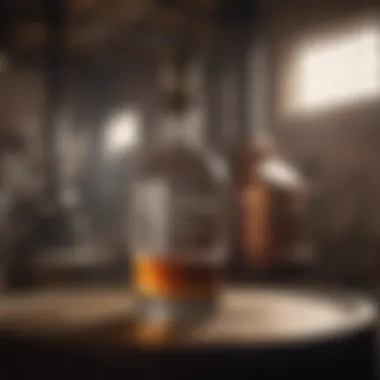
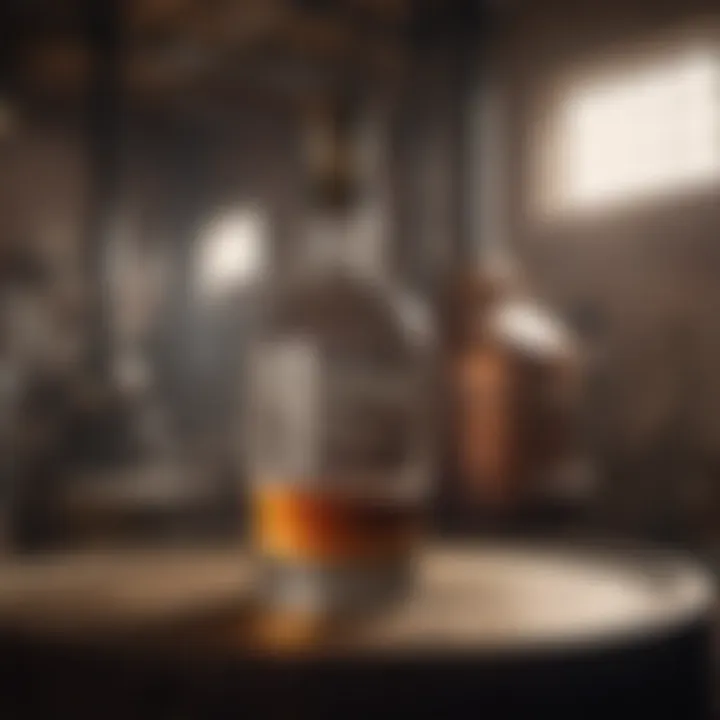
Proof adjustments
Proof adjustments are common before bottling to achieve the desired alcohol content. Adding water helps bring the spirit down to bottling proof. This step is crucial in ensuring the final product remains balanced. With a careful adjustment, distillers can enhance the drinking experience. Improper proofing can lead to an unbalanced product, which is why attention to detail is essential.
Labeling regulations
Labeling regulations dictate how bourbon is marketed. Labels must adhere to strict guidelines set by regulatory bodies, including the identification of the distillation source, bottling date, and aging specifics. Accurate labeling promotes transparency and helps consumers make informed choices. Misleading labels can harm a distillery's reputation, emphasizing the need to comply with regulations in the industry.
Importance of batch consistency
Batch consistency is vital in the production of quality bourbon. Distillers aim to maintain a uniform flavor profile across batches. This consistency builds consumer trust and satisfies repeat customers. Variations might occur due to differences in ingredients or barrel aging, so careful monitoring is necessary. Ensuring batch consistency enhances reputations and ensures that consumers receive what they expect.
Ingredient Specifications
Ingredient specifications are fundamental to understanding bourbon whiskey. They define the unique character and taste of the spirit, which many gourmets appreciate. The choice of grains, water, and other ingredients directly affects the flavor profile and quality of bourbon. Without these specific guidelines, the identity of bourbon would shift significantly, making it essential to the bourbon landscape.
Grain Bill Requirements
Minimum corn percentage
The legal requirement for bourbon whiskey includes a minimum of 51% corn in the grain bill. This aspect is crucial as it provides the bourbon its distinctive sweetness and texture. The sweetness from corn balances the more robust flavors that come from other grains used in the production. Corn is also readily available and adds to fermentation efficiency, making it a popular choice among distillers.
One unique feature of this percentage is that it helps define bourbon as a product. This minimum creates a consistent flavor profile that consumers expect. The disadvantage, however, is that it limits the diversity of grain types that can be utilized, which can affect the final product’s complexity.
Role of other grains
While corn is the primary grain, the role of other grains is also significant. Bourbon can include malted barley, rye, and even wheat. Each type of grain contributes different flavors and textures to the whiskey. For example, rye adds a spiciness that many consumers find appealing, while wheat often results in a smoother character.
Using a mix of grains allows distillers to craft bourbon that appeals to various preferences. However, it requires skilled blending to ensure that no grain overpowers the others. This balance is essential in creating a high-quality bourbon.
Impact on flavor profile
The impact of the grain bill on flavor profile cannot be overstated. Different combinations lead to a range of flavors from sweet to spicy or even fruity. Consumers often explore these flavor profiles to find their preferred bourbon. The interplay of corn and additional grains is a delicate process, and successful ones can create a depth that is rich and satisfying.
However, too much focus on unusual grains can sometimes lead to a product that strays too far from traditional bourbon characteristics. It's essential to maintain balance to preserve the essence of bourbon whiskey itself.
Water Source
Importance of mineral content
Water is a key element in bourbon production. The mineral content of the water can influence the whiskey's taste and mouthfeel. Mineral-rich water sources, like those found in Kentucky, can enhance specific flavors and help with fermentation processes. A well-balanced mineral content supports yeast health during fermentation.
Yet, using water with improper mineral content can lead to undesirable flavors in bourbon. This is why many distillers are selective about their water source.
Geographical sourcing
Geographical sourcing plays a crucial role in bourbon production. Bourbon must be produced in the U.S., primarily in Kentucky, to meet legal definitions. This geographical requirement attributes various characteristics to the bourbon, as the local climate, water sources, and traditions shape the production process.
This specification not only honors tradition but also adds authenticity and a sense of place to the final product. However, sourcing water from a specific region can lead to limitations in availability or increase production costs, posing challenges for distillers.
Water treatment processes
Water treatment processes are also vital in bourbon production. Simple filtration can remove unwanted impurities, ensuring that the purest water is used in the production pipeline. Adjusting water chemistry allows distillers to tune the water to match their specific needs, enhancing fermentation and overall taste.
On the downside, excessive treatment can strip water of essential minerals. Careful consideration is required to find the right balance of treatment to avoid altering the whiskey's quality or flavor.
Understanding these ingredient specifications is crucial to appreciating the complexity of bourbon whiskey. Each element plays a vital role in crafting this beloved American spirit.
Geographical Significance
The geographical significance of bourbon whiskey plays a crucial role in its identity and production. Bourbon is not merely a distilled spirit; it is deeply woven into the fabric of American history and culture, particularly in the region of Kentucky. This geographical connection helps define its qualities and enhances its marketability. The land, climate, and local resources are all critical elements that influence the flavor, aroma, and character of bourbon. Thus, understanding the geographical aspects is essential to appreciate the complexities and nuances of this cherished spirit.
The Bourbon Trail
Key distilleries in Kentucky
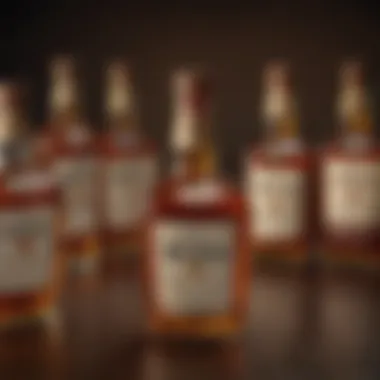
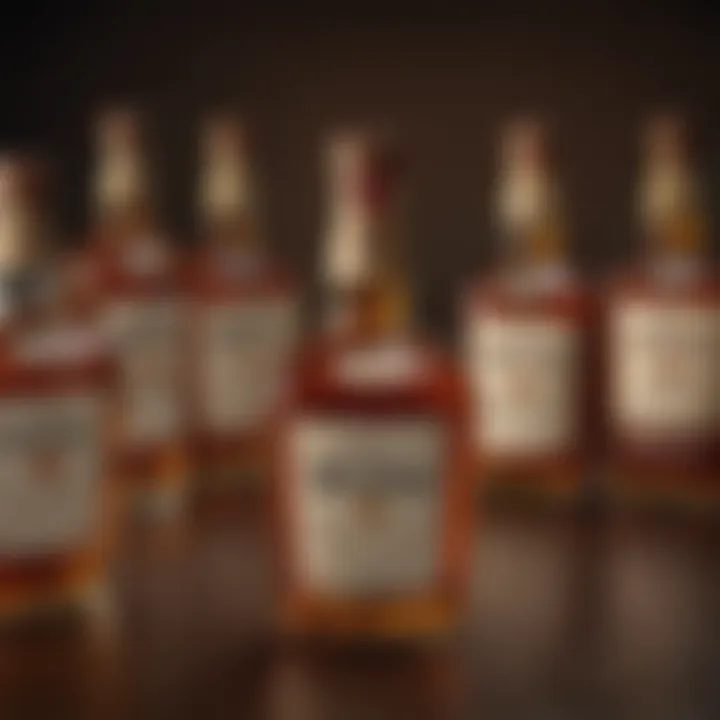
Kentucky is the heart of bourbon production, home to many renowned distilleries like Maker's Mark, Jim Beam, and Woodford Reserve. Each distillery has its unique techniques and recipes, contributing to the distinct profiles of their bourbons. For instance, Maker's Mark is known for its smooth and sweet flavor due to its use of red winter wheat instead of rye in its mash bill. This characteristic makes it a popular choice among bourbon enthusiasts.
The key aspect of these distilleries is how they honor tradition while also embracing innovation. Many of them have adapted their methods over the years to appeal to modern tastes without compromising the essence of bourbon. This dynamic relationship allows for a diversity of flavors and styles, enriching the bourbon experience.
Impact of region on production
The geographical location of the distilleries in Kentucky has a significant impact on the production of bourbon. The limestone-rich water found in the region is softened and filtered naturally, making it an ideal source for producing high-quality bourbon. This water does not contain iron, thus preventing undesirable flavors.
Additionally, the climate plays a vital role in aging. The Kentucky temperature fluctuations, with warm summers and cold winters, help whiskey expand and contract within the barrel. This ongoing process enhances the extraction of flavors from the wood, leading to a more complex spirit. These environmental conditions are specific to Kentucky, making it a prime location for bourbon production and a definitive factor in what sets it apart from other whiskies.
Tourism and bourbon culture
The popularity of bourbon has led to the development of the Bourbon Trail, which attracts tourists from around the world. This initiative encourages visitors to explore the various distilleries while learning about the bourbon-making process. The trail showcases the significance of bourbon in Kentucky's culture, highlighting local traditions and craftsmanship.
Tourism in this context is beneficial, as it bolsters the local economy and educates people on bourbon's heritage. Many distilleries offer tours, tastings, and events that promote community engagement while emphasizing the cultural importance of bourbon. Visitors leave with a deeper appreciation for the spirit and its roots.
Legal Geographical Indications
Comparison with Scotch and Irish whiskey
When discussing legal geographical indications, it's essential to understand how bourbon compares with Scotch and Irish whiskey. Unlike bourbon, which is regulated by specific American laws, Scotch and Irish whiskies have their own legal definitions rooted in their respective countries.
Bourbon must be produced in the United States, with at least 51% corn in its grain bill, while Scotch relies heavily on malted barley, and Irish whiskey often includes combinations of malted and unmalted barley. This difference highlights the uniqueness of bourbon's flavor profile and production methods, as well as its role within the context of global spirits.
Regional variations of bourbon
While all bourbon shares a base style, there can be notable regional variations. Different distilleries may source grains from various local farms or employ distinct aging techniques, resulting in unique flavor characteristics. For instance, bourbons produced in Indiana may have a different profile compared to those made in Kentucky due to the varying water sources and environmental conditions.
Such variations are a testament to the diversity within bourbon. Those seeking unique tasting experiences will find that these regional differences often result in compelling discoveries. Understanding these nuances enhances the appreciation of bourbon overall.
Importance of authenticity
Authenticity in bourbon production is paramount. Strict regulations govern what can be labeled as bourbon, aiming to preserve its integrity and heritage. This authenticity gives bourbon its cultural weight and makes it a source of pride for distillers and consumers alike.
The unique conjunction of tradition and strict legal definitions reinforces bourbon's status as a distinctly American product. Differentiating authentic bourbon from imitations helps maintain quality and fosters a sense of trust among consumers. As more craft distilleries emerge, the emphasis on genuine bourbon production will remain essential to the spirit's reputation and legacy.
Bourbon in American Culture
Bourbon whiskey holds a unique place within American culture, acting as more than just a spirit. It is a symbol of tradition and craftsmanship that harkens back to the early days of the United States. The cultural significance of bourbon extends into various aspects of life, influencing everything from gastronomic trends to social interactions.
As bourbon continues to be celebrated, its integration into culinary arts showcases its versatility. Chefs and mixologists explore the flavors and aromas of bourbon, utilizing this spirit in innovative ways. The relationship between bourbon and contemporary food culture is dynamic, marked by collaboration between old methods and modern trends.
Role in Culinary Arts
Use in cooking and cocktails
Bourbon is a popular choice in both cooking and cocktails owing to its depth of flavor. Its sweet, caramel notes offer a rich complexity that enhances various dishes. For example, in marinades and glazes, bourbon can bring a distinctive richness that elevates the dish. In cocktails, its unique profile complements a wide range of ingredients, providing a base that can be both refreshing and robust. This makes bourbon a valuable ingredient in a chef's toolkit. The ability to bridge different flavor profiles marks bourbon's significant role in the culinary scene.
Pairing bourbon with food
Pairing bourbon with food is an art form in itself. Certain bourbons can enhance the dining experience when matched with the right dishes. The sweet notes of bourbon contrast beautifully with savory flavors, making it an excellent match for grilled meats or spicy dishes. Intentional pairing can highlight the qualities of both the food and the drink, creating enjoyable experiences. However, finding the perfect match can sometimes be challenging, as bourbon’s boldness can overwhelm lighter fare.
Bourbon's influence on gastronomy
Bourbon has notably influenced the world of gastronomy. Its use extends beyond traditional recipes, leading to experimentation in modern cooking. Chefs often incorporate bourbon into desserts, where it adds a depth that complements chocolate or fruit flavors. This expands the possibilities for culinary creativity, showing bourbon’s versatile presence in modern kitchens. At times, though, its strong flavor may not suit every dish, requiring a careful approach in its application.
Bourbon and Modern Trends
Craft distilling movement
The craft distilling movement has reinvigorated interest in bourbon. Small, independent distilleries have started to emerge, bringing new expressions and styles to the market. This movement emphasizes quality and artisanal methods, overlapping with a revival of traditional practices. Many consumers appreciate the unique characteristics of craft bourbon, making it a popular choice among whiskey enthusiasts. However, the cost of craft bourbons tends to be higher due to the smaller production scale.
Convergence with mixology
The convergence of bourbon with mixology showcases its adaptability in bartending. Modern bartenders integrate bourbon into classic and innovative cocktails, appealing to diverse palates. The revival of classic cocktails, such as the Old Fashioned or the Manhattan, reflects this trend and encourages appreciation for bourbon. Nevertheless, some purists may argue about deviating from traditional recipes.
Social media's impact on bourbon culture
Social media has changed how bourbon enthusiasts connect and share their passion. Platforms like Facebook and Reddit allow users to exchange ideas, recipes, and reviews. This has fostered a community of dedicated fans who openly discuss their experiences. However, the same platforms can sometimes distort perceptions, leading to trends that focus more on aesthetics than quality features of bourbon.
The rise of social media has democratized information, making bourbon accessible to a wider audience than ever before.







